Paulina Ortiz is an artist, designer, and president of the Ibero-American Textile Network. She has a bachelor’s degree in Fine Arts from the California College of the Arts and a licentiate degree with an emphasis in Textiles from the School of Art and Visual Communication at the Universidad Nacional de Costa Rica, where she currently works as a professor.
In this interview we discover where Paulina’s love for nature began and how family influenced her early career. We learn about her fascinating techniques and methods and the illuminating direction her art will be taking in the future.
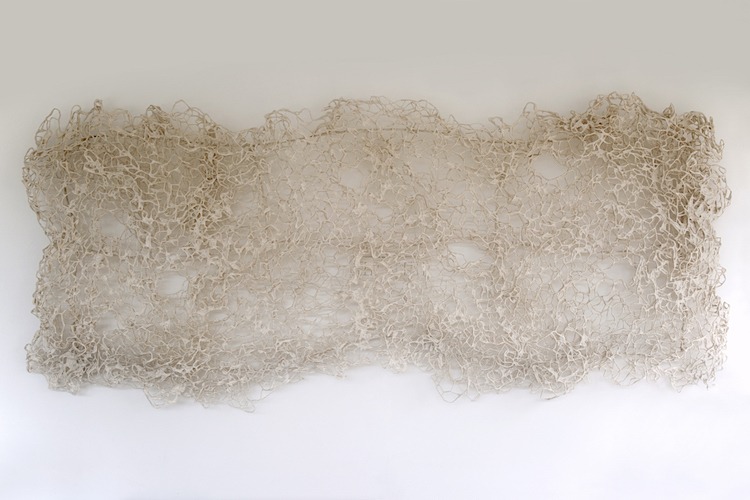
TextileArtist.org: What or who were your early influences and how has your upbringing influenced your work?
Paulina Ortiz: I think my love of textiles and nature is marked by the extremely pleasurable, exciting sensory experiences I have had ever since I was a child and to some extent continue experiencing today.
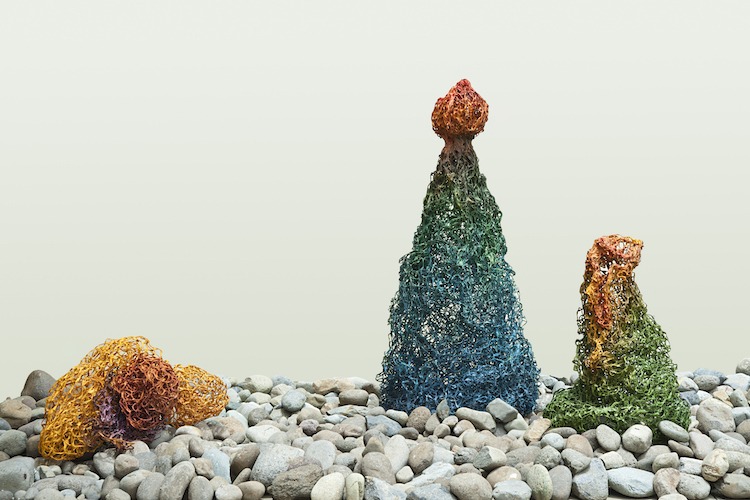
I got into textiles while spending time on the coffee and sugar cane farm owned by my maternal grandparents. I remember how my grandmother, to whom I was very attached, would take apart the animal feed sacks, embroider them, and then sew them on her pedal machine. My mother, who is also an artist, always encouraged me to draw and paint, and she would help me put together my doll clothes and houses while teaching me other techniques.
On the other hand, my father, who was a slightly adventurous lawyer, would often wind down by taking us mountain climbing with all my cousins and uncles. These were fun times that even today drive me to discover and enjoy walking the mountains of Costa Rica. These walks in the woods have become spaces for spiritual encounter with my own nature, which later is converted into the weaves, textures, and organic shapes of my work.
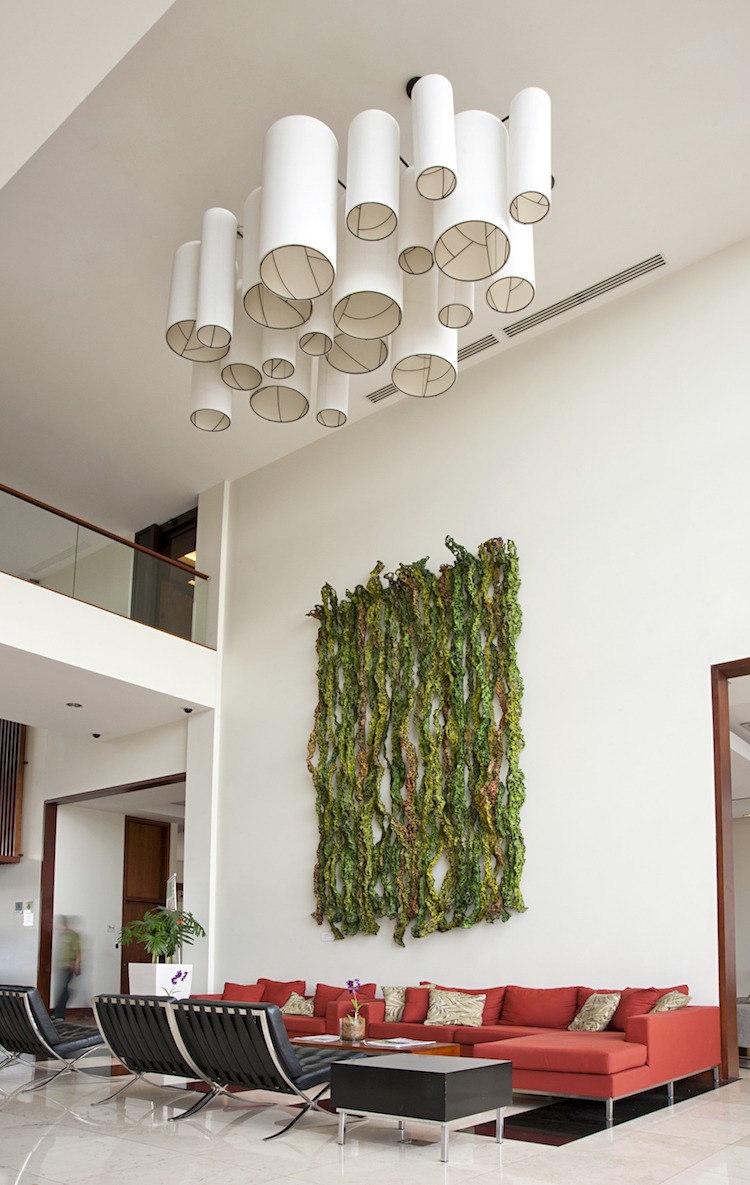
Mystical spaces
What was your route to becoming an artist?
I was on my way to study architecture – a degree that didn’t exist in my country when I entered the university – and took three years of civil engineering and then one year of architecture when they opened a new school. Later, when I was applying to architecture schools in the U.S. I discovered the one for textile art at the California College of the Arts. That’s when I decided I wanted to dedicate myself to art and design.
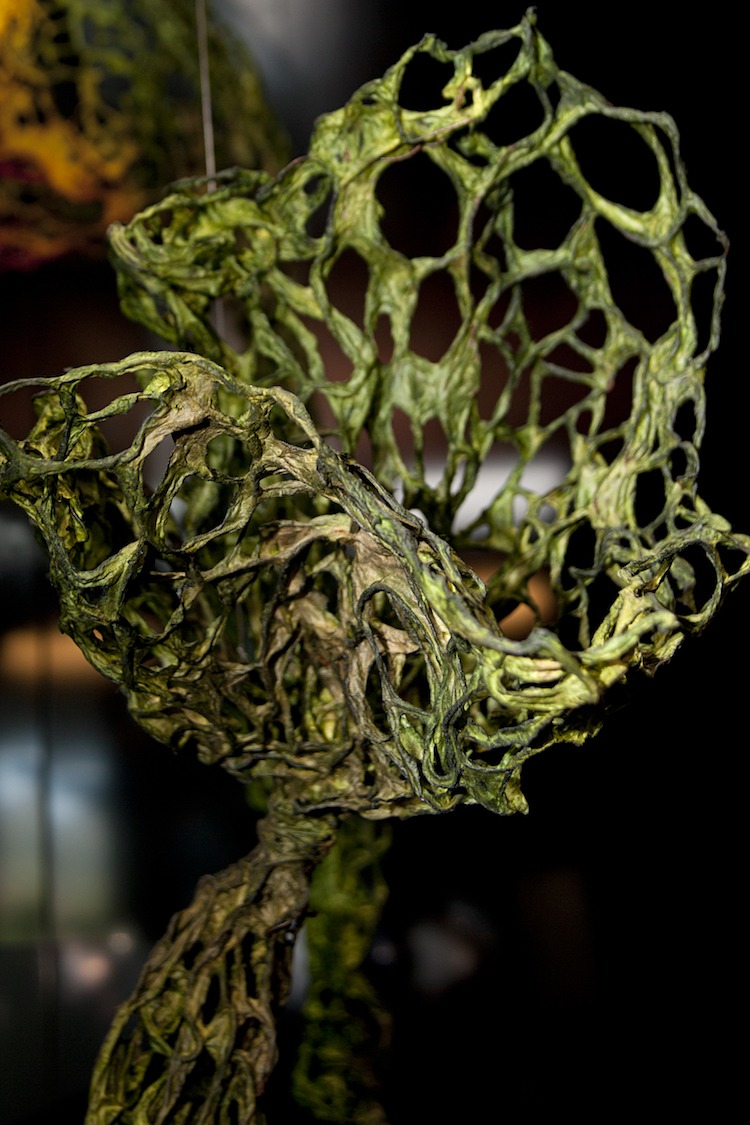
Tell us a bit about your chosen techniques.
I have developed the techniques I use for my works of art on the basis of materials indigenous to Costa Rica that let me evoke the textures and lights I find in the mystical spaces in the forests I walk through in the mountains.

How do you use these techniques in conjunction with Pita fiber?
In order to create the arboreal elements of my works in pita fiber (cabuya), the process becomes somehow a ritual starting with the cleaning and combing of the pita fiber up to the twisting of the fiber with wire, which lets me give it the shapes I want. Then each element is painted individually as if it had a life of its own and would like to connect and interweave with others.
And, more specifically, how was your imagination captured by metal and paper?
Several years ago I started using metal structures as supports for my pieces to give them greater stability. When I found a supplier who did a really good job making the aluminum structures I decided to make them visible.
As for paper, Nance O’Banion and Donald Farnsworth introduced me to the techniques of handmade paper. The process of instantly getting textures and shapes from paper pulp fascinates me – as does seeing the transparencies and qualities formed by the fibers in the paper.
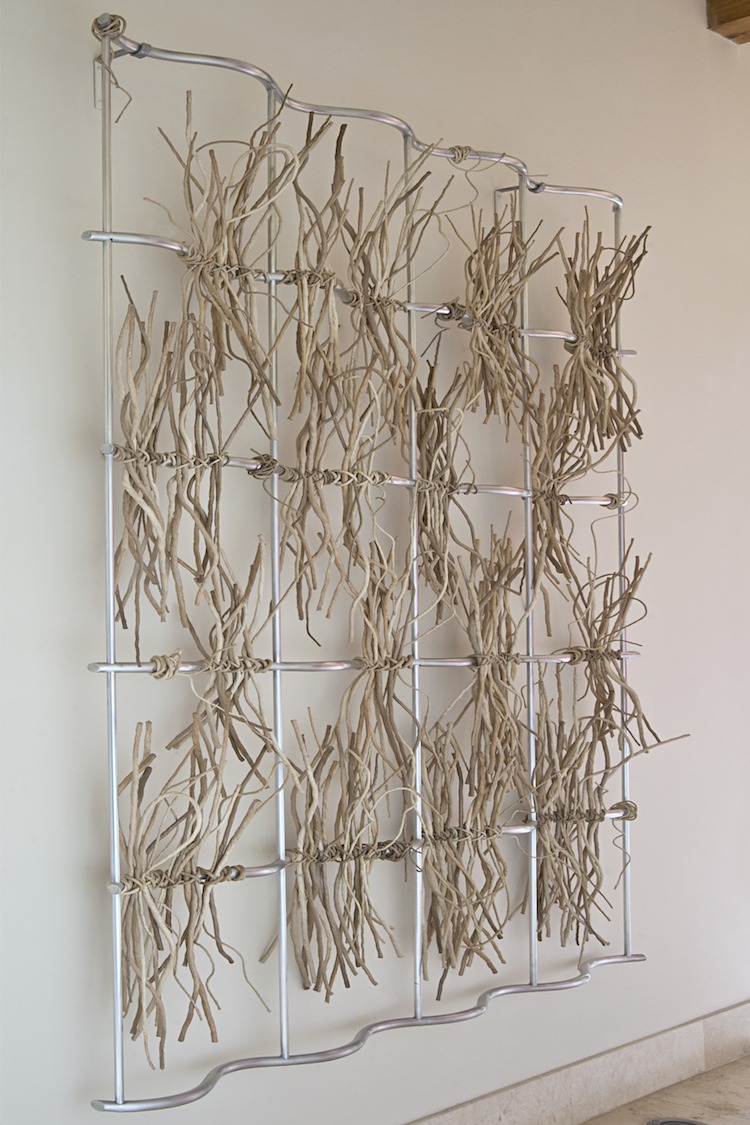
Connecting inner worlds
How would you describe your work and where do you think it fits within the sphere of contemporary art?
My work is very intuitive and sensory. I try to speak to my audience, connecting them with their inner worlds through their senses, and creating organic works and installations of textures and colors whose interconnecting elements create a weave evoking the essence of nature and contrasting with the toxic industrial surroundings and materials of today.
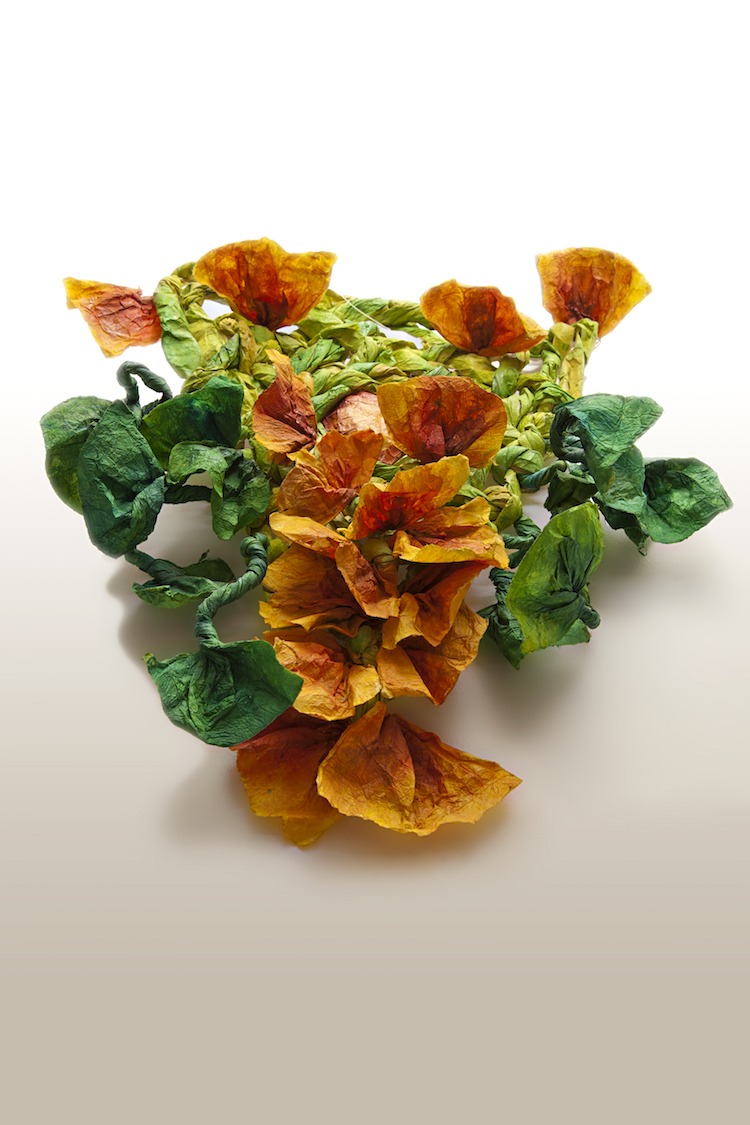
Tell us about your process from conception to conclusion.
I start with the creation of my works in my mind; I mature, edit, and change them through several mental stages. In these mental stages I add the materials and shapes I would like to use, and finally I do quick sketches to scale in my sketchbook to see the proportions. I prepare the materials and start to work.
What environment do you like to work in?
My study; I have everything there I need to work.
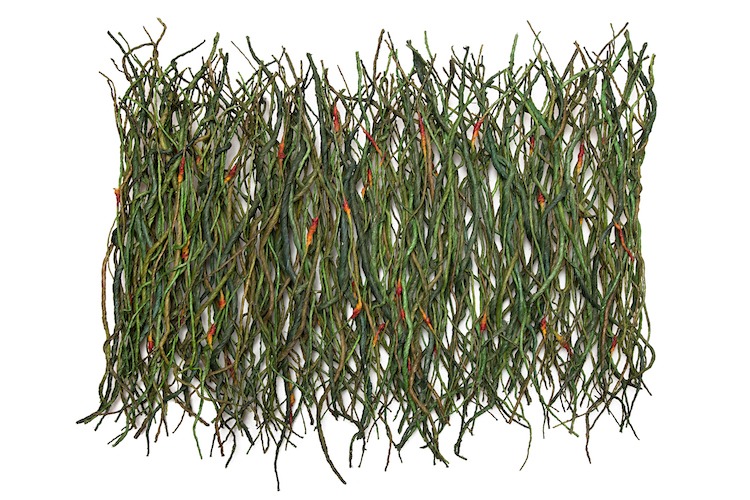
Who have been your major influences and why?
My professors, Nance O’Banion and Ruth Boyer of the California College of the Arts. Nance taught me to enjoy handmade paper and the creation of new hand-made, three-dimensional shapes that would bid defiance to structures and pigeonholing. Ruth Boyer, my history professor, encouraged me to take notice of textile detail and how this is the product of different eras and circumstances in the history of human beings and their surroundings.
Olga de Amaral, practically the only Latin American textile artist known in the U.S. while I was studying, became a reference for my professional life. I’m intrigued by her approach to pre-Colombian themes and the Latin American soul and how these affect the textures and shapes of her work. I really love to see her persistent enthusiasm for work and for mounting exhibitions around the world, still now.
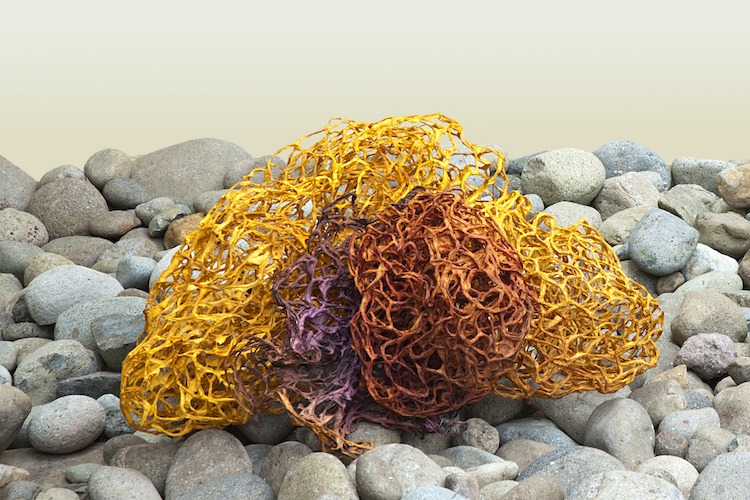
A bright future
How has your work developed since you began and how do you see it evolving in the future?
My art pieces started with my works of arboreal elements evoking the forest or seaweed spaces. At some point I took a break from that process to get a better mastery of pictorial techniques and be able to express myself more fluently through color in my tapestries. This done, I continued experimenting and refining the technique and eventually I introduced visible aluminum structures in my works.
In 2003 I made some sculptures for the Four Seasons Hotel in Guanacaste that had the potential of becoming light sculptures. The hotel’s interior designers asked me for a project with those features for their golf club, and this led later, in 2007, to the creation of other light sculptures for another hotel. Since then I have simultaneously created, along with my works of art, light sculptures that can give a singular ambience to the spaces.
A few years ago I also developed a strong allergy to the residue left behind from cleaning the pita fiber, forcing me to go back to handmade paper as my main resource for preparing my works.
In the future I can see that my experience with the more functional art of light sculptures is going to intermingle with my experience with works of art, creating an interesting hybrid of textures, shapes, and colors that will explore space, light and mobility.
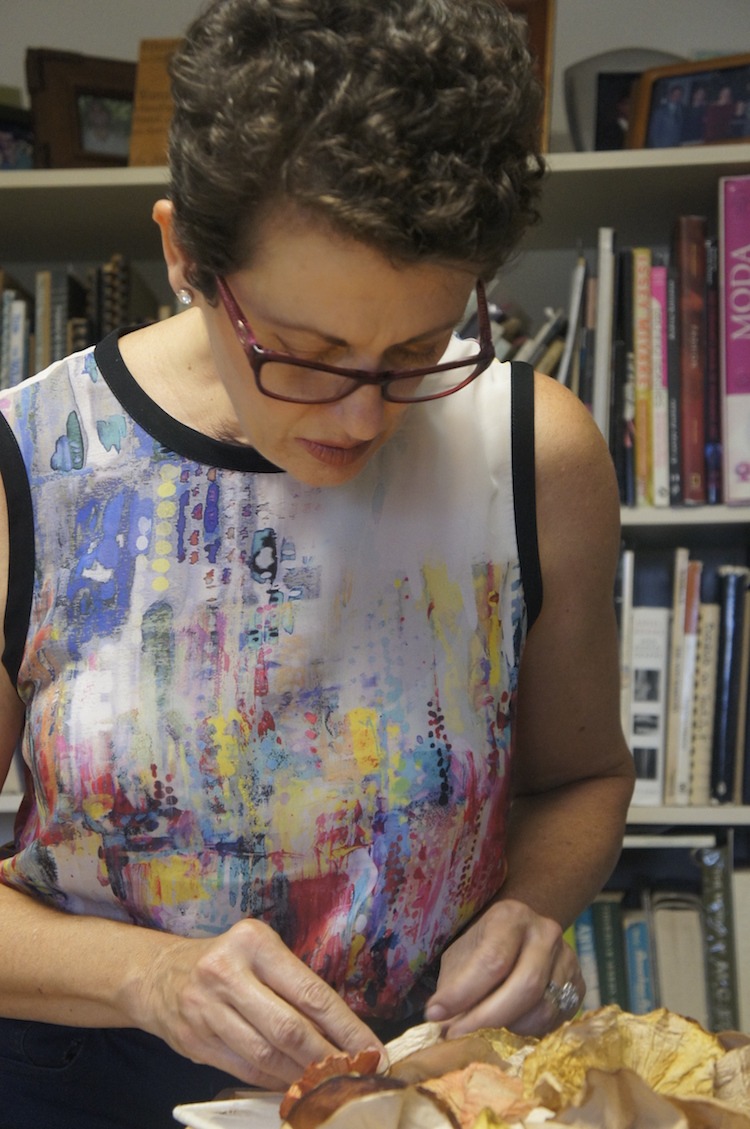
What advice would you give to an aspiring textile artist?
Be very persevering and consistent in exploring your ideas along with the shapes and materials you would like to use to represent them. Then, learn your scope of action for setting up communication and distribution strategies for that new body of works.
Do you give talks or run workshops or classes? If so where can readers find information about these?
I give talks on the situation of the textile practice in Latin America, the ability of its agents to interconnect, and some contemporary artists who have made a mark. I’ve written some articles on this for Surface Design Magazine.
I’m also a professor of advanced level classes in the textile emphasis of the School of Art and Visual Communication at the Universidad Nacional de Costa Rica.
How do you go about choosing where to show your work?
An essential point for choosing the places where I show my works is that the people responsible for handling them should be textile enthusiasts who know about the development of my work, whether they’re curators of a museum, agents for some international exhibition, or representatives from a gallery. Some of my works can also be seen in my studio, as well.
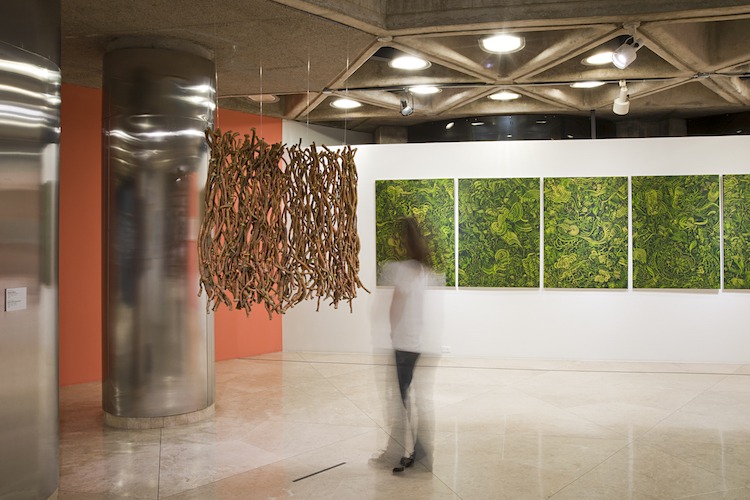
For more information visit: www.paulinaortiz.com
If you’ve enjoyed this interview why not share it with your friends on Facebook using the button below?
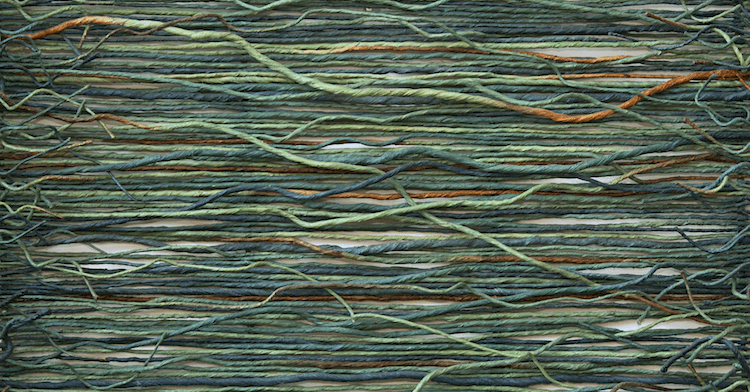

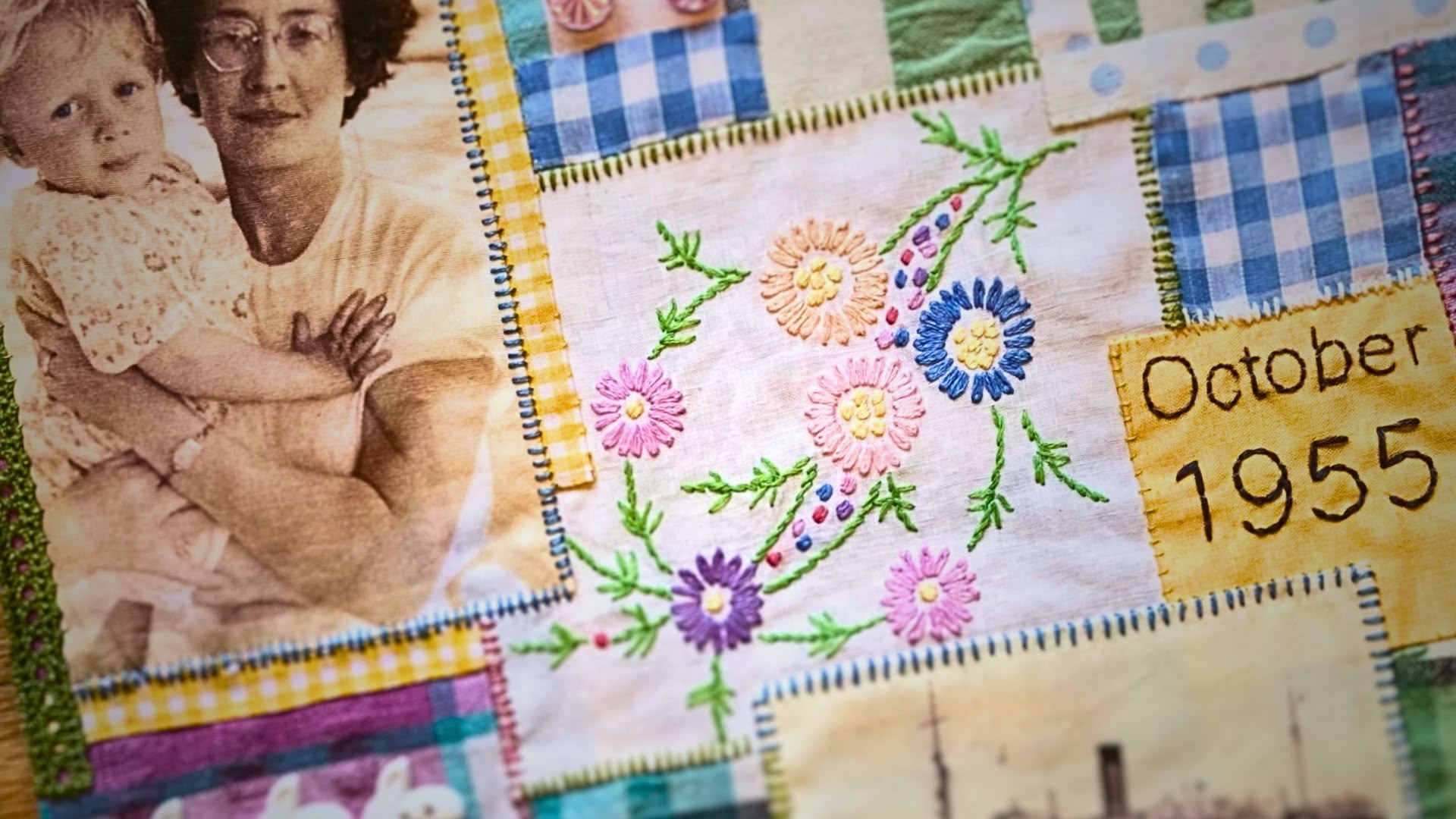
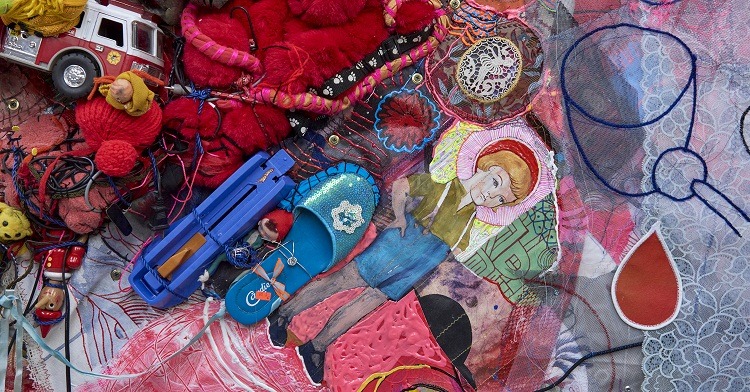
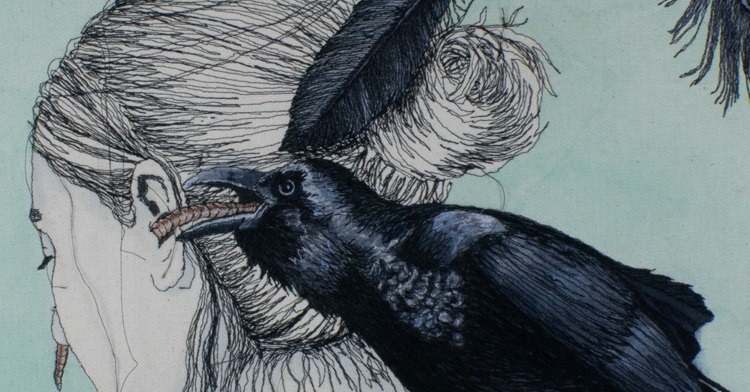
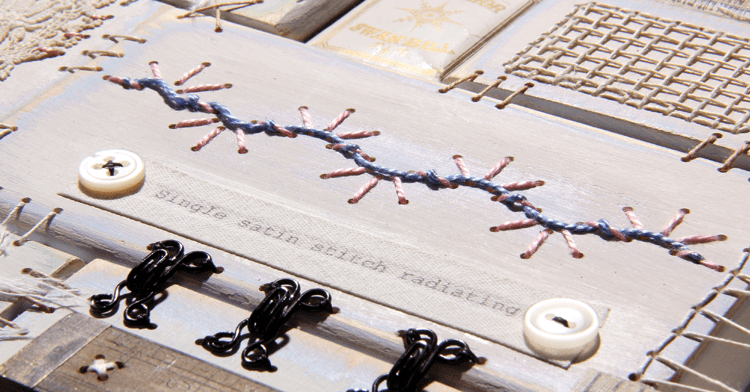
![Contemporary textile artist Lisa Soloman featured image||Lisa Soloman - Sen [1000 doilies]](https://www.textileartist.org/wp-content/uploads/Lisa.jpg)
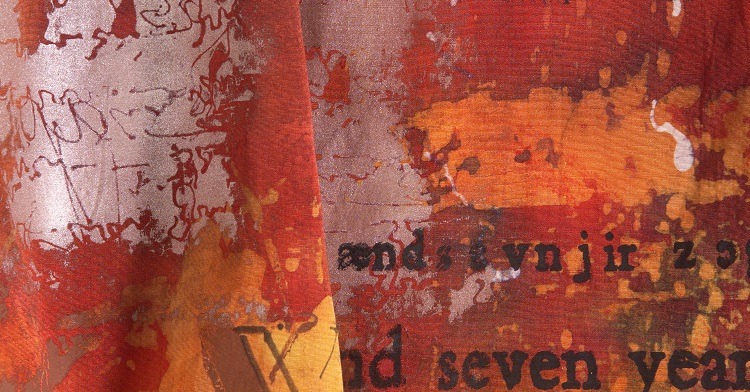
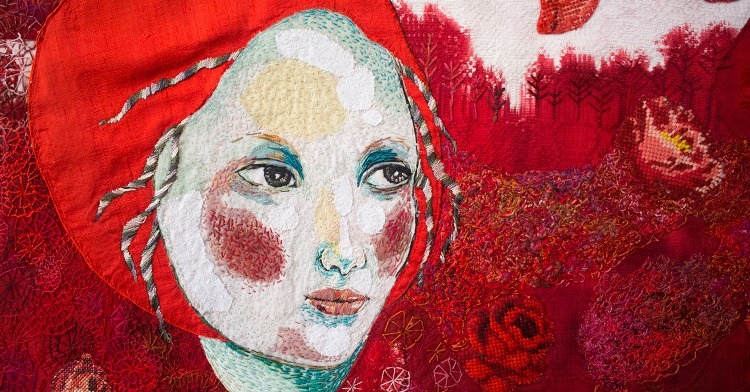
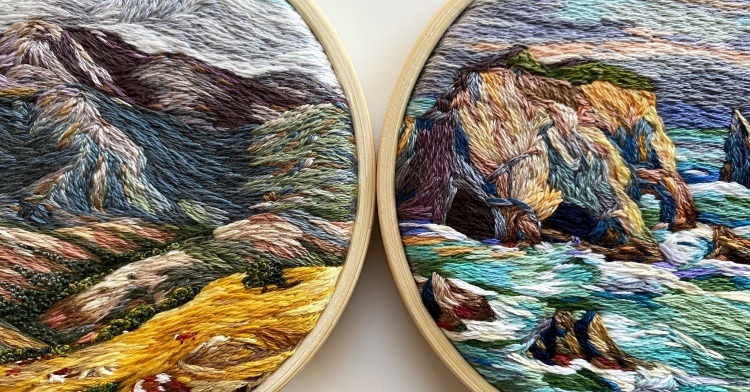
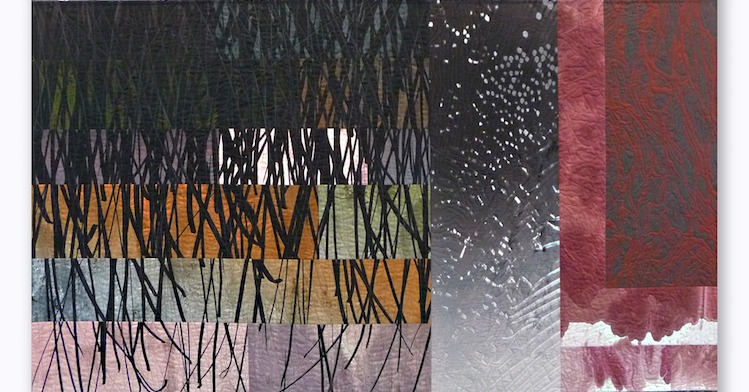
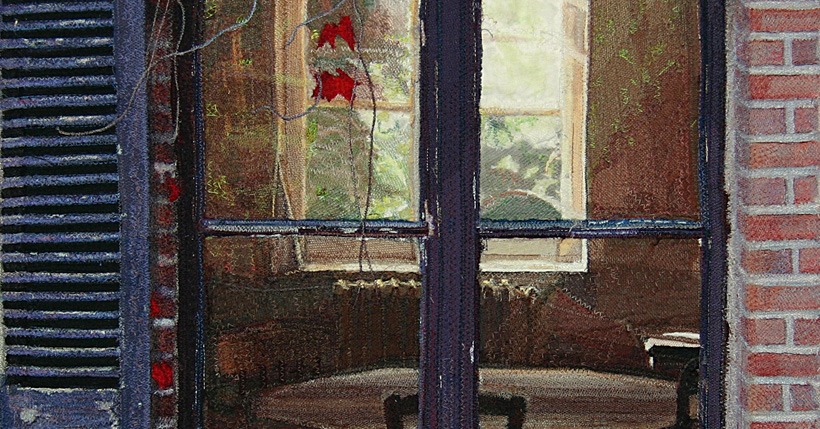
7 comments
Beverley Rossini
I love it love it!
Christine Robertson
Lindo trabalho.Não conhecia.Ganhou uma admiradora brasileira!
charlotte
Thank you, Christine. Translation of your comment for any non-Portuguese readers ‘Beautiful work. I did not know. Won a Brazilian admirer!’
Eugenia Kruse
Una gran admiradora de la artista y de la persona.
Su creatividad, disciplina y perseverancia han hecho que llegará muy lejos y que así continúe.
Muy orgullos a de mi amiga.
Loida Pretiz
Felicidades Paulina, un proceso de larga investigación, experimentación y creación. Mucho talento y creatividad!
adriana
Me enca ta su trabajo y muy orgullosa de que sea Costarricense!
Malu
Genial work. Did you come to Chile ?
Thank you